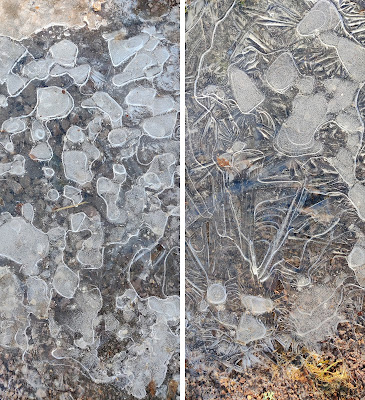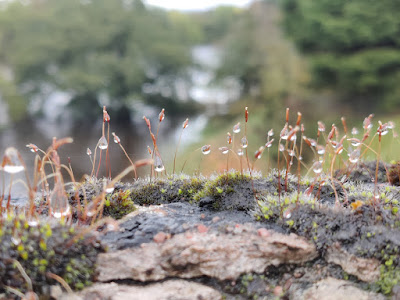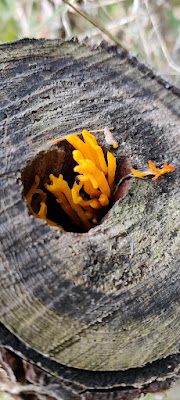It has been a long time since my last post - partly because I have been busy and also because there are not many wildflowers out at this time of the year, so I have been looking at lichens instead. Although this blog has the title of Newtonmore Wildflowers, my interests have expanded since then but maybe not everyone who reads this is as fascinated by lichens as I have become. And I did not want to bore you too much with my lichen explorations... but in the absence of any other news, here goes!
I was helping some friends move house from a rather isolated cottage on the back road to Laggan, and took the opportunity to get a few twigs to look at (for lichens) and managed to find and identify two that were new to me. They were both quite small crustose lichens, which just means that they grow as a thin crust on the bark. The first one was a white crust with black fruiting bodies (apothecia) on it:
It's quite hard to identify these kind of lichens as there are loads with white crusts and black fruiting bodies. One way is to take a slice of the black discs and look at it under a microscope. This is easier to say than to do as they are tiny - just a millimetre across! Here's what I saw:
Another trophy from the removals was a piece of black plastic from the hen's enclosure roof, which was covered with lichens, so I couldn't resist taking a piece. You may think it's a bit odd to be enthused about a piece of plastic but it is covered with lichens for the curious mind to investigate!
I'll do another post to tell you what I have found on it so far, but the first thing I did was to shine a UV torch on it, and I'll leave you with the colourful result.


















































.jpg)